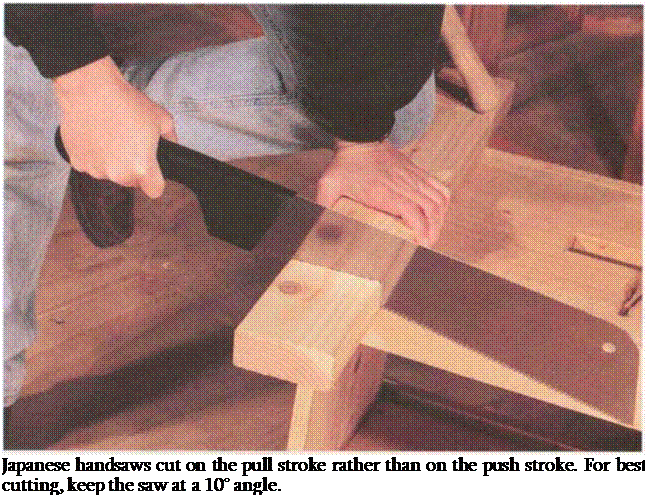CUTTING TOOLS
Cutting material to size, whether wood, drywall, or even metal, is a big part of what a carpenter does. Today, most big cutting jobs are done with power tools. But there are times when a few simple hand tools are more appropriate. That’s why it’s important to keep a few saws, tin snips, and knives on the job site.
 |
The saws I keep on the job site are wood-cutting handsaws, a drywall saw, a coping saw, and a hacksaw. I seldom use a handsaw these days, but when I have only a cut or two to make, a handsaw is faster than plugging in my power saw. My two handsaws are both crosscut saws. One is for cutting rough wood, like 2×4 studs, and has 8 teeth per inch. My finish saw has 12 teeth per inch and cuts a piece of molding without a lot of tearout.
I prefer Japanese handsaws (Japan Woodworker; see Sources on p. 198) over our standard American handsaws. Japanese handsaws are razor sharp and easy to use. Unlike standard handsaws, these saws cut on the pull stroke rather than on the push stoke. This makes them safer, because they won’t buckle and bounce out of the kerf (or saw cut).
Some models even have teeth for crosscutting on one side of the blade and teeth for ripping on the other. When cutting with a Japanese handsaw, cut at a lower angle than you would using a standard handsaw—about 10° (see the photo above).
I keep a drywall saw in my toolbucket because it’s handy for cutting relatively soft materials like drywall and foam insulation board. A drywall saw tapers to a point, making it ideal for piercing and cutting in the middle of the material rather than from the edge, and its coarse teeth make quick (though ragged) cuts (see the photo on the facing page).
The coping saw is invaluable for trim work. It has a very thin blade with fine teeth and can be rotated to any angle to make intricate or curved cuts.
Occasionally, a carpenter will need to cut through metal. For nails or pipes, you’ll need a hacksaw. It has a hardened blade designed to cut through all kinds of metal, and it’s great for cutting through plastic PVC pipe.
Saw maintenance While drywall saws are cheap and easily replaced, my handsaws aren’t, so I take good care of them.
I keep them sharp (while it’s possible to do this yourself, I find it easier to send them out to be sharpened) and store them in a cardboard sheath to preserve their sharpness. To keep the blades free from rust or corrosion, clean them with a rag or steel wool and paint thinner, then coat them with three-in-one oil or a silicone spray lubricant. Be mindful when using paint thinner, because it’s toxic. Wear protective gloves, use a minimum amount, and don’t dump the excess on the ground.






Leave a reply